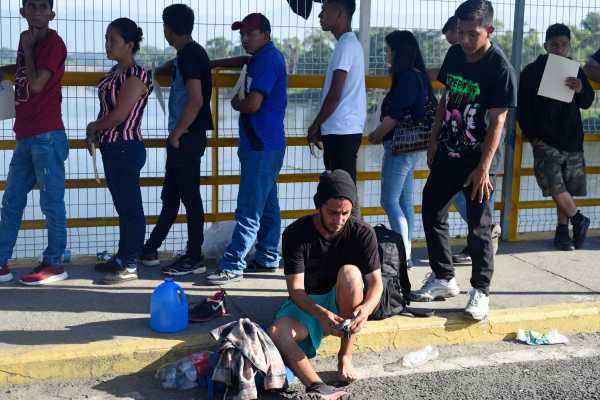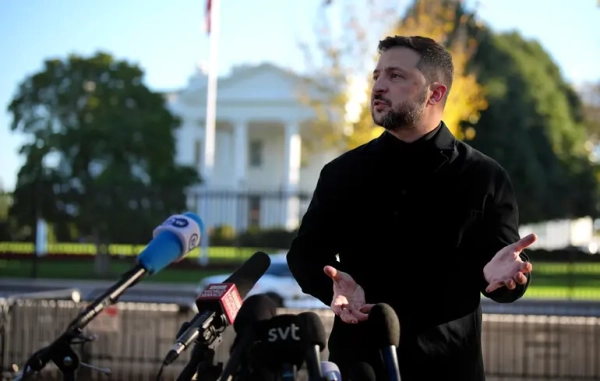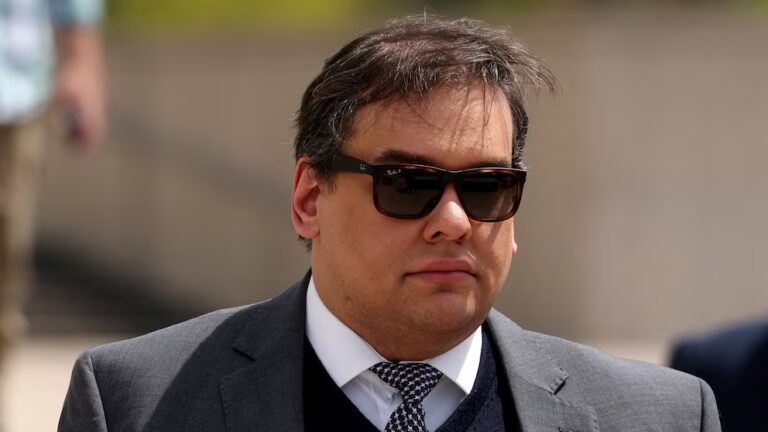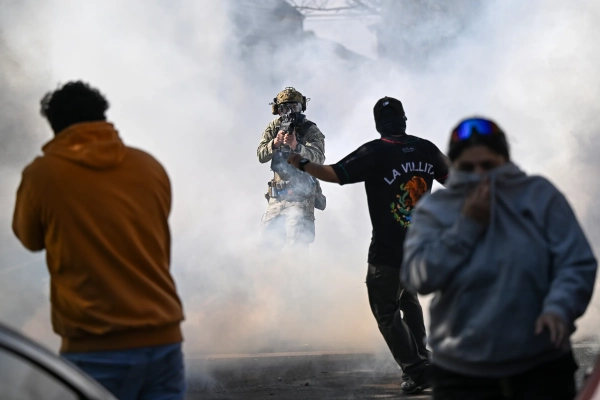
Violence broke out on Mexico’s border with Guatemala on Monday after Mexican immigration authorities denied entry to a caravan of thousands of migrants, mostly from Honduras.
About 4,000 migrants had requested passage by presenting a petition addressed to Mexican President Andrés Manuel López Obrador on the bridge across the Suchiate River, which connects the port of entry at Ciudad Hidalgo to Guatemala. But after authorities refused to open the gates to the port, about 500 migrants attempted to cross the border by wading through the river.
In an unusual show of force, Mexican National Guard troops carrying riot shields fired tear gas and threw rocks at the migrants on the riverbank to stop them from crossing. The migrants threw rocks of their own at the guardsmen, according to NPR’s James Fredrick. Amid the chaos, Reuters reported that some families were separated.
It was yet another instance in which Mexico has sought to clamp down on Central American migrant caravans arriving at its border with Guatemala. The government wants to avoid antagonizing US President Donald Trump, who in 2019 threatened to impose tariffs on all Mexican goods if the country did not step up its immigration enforcement efforts. Mexico also simply lacks the capacity to manage such large numbers of migrants.
In a statement Monday, the Mexican government accused the caravan’s leaders of directing migrants to cross the river without considering how it would endanger children and other vulnerable members of the group. Five National Guard members sustained injuries as a result of Monday’s scuffle, the government said.
It’s not clear how many migrants were injured, but reports have indicated that at least some were. The Mexican government said it has provided medical care, including hospitalization, to migrants who have requested it, including some who appeared dehydrated.
Although some Hondurans intend to remain in Mexico and find jobs, most of those in the caravan are seeking transit through Mexico in the hopes of reaching the US border. It’s a signal that as long as violence and economic instability continues to drive Central American migrants out of their home countries, they will continue to seek refuge in the US — no matter how much the Trump administration pressures other nations to stop them.
What will happen to Hondurans in the caravan
As reports surfaced that a caravan was en route to the Mexican border last week, López Obrador had vowed that migrants could either request a work permit to remain in southern Mexico legally or claim asylum, but would not be permitted to travel to the US. Now, however, it appears that at least some of the migrants will be deported.
With the aid of the National Guard, Mexican immigration authorities sent over 400 of the migrants who attempted to cross the border to immigration detention facilities, where they will be screened to determine whether they have the right to remain in Mexico or will be sent back to Honduras. Women and children will be deported via plane, whereas others will travel via bus, according to the Mexican government.
As is standard practice in Mexico, those who claim asylum will be released from detention and processed by the Mexican Commission for Refugee Assistance (COMAR). The United Nations High Commissioner for Refugees (UNCHR), which has recently expanded its presence in Mexico to eight offices, has agreed to help COMAR identify migrants with asylum claims, a spokesperson for the agency said.
Honduras produces high numbers of people seeking asylum: In 2017, the most recent year for which data is available, the US granted asylum to 2,048 migrants from Honduras, compared with 1,048 from Mexico, 3,471 from El Salvador, and 2,954 from Guatemala.
Honduras remains a hotbed of gang violence, largely perpetrated by the international criminal gang MS-13, which formed in Los Angeles and was transplanted to Central America following mass deportations of unauthorized immigrants with criminal histories in the 1990s. The gangs facilitate drug trafficking, extort local residents, and force teenage boys to join.
The country also has the fifth-highest homicide rate worldwide, according to the United Nations Office on Drugs and Crime, as well as rampant government corruption and high rates of violence against women and LGBTQ individuals.
Hondurans likely won’t be able to seek asylum in the US
Migrants’ chances of evading Mexican authorities and being granted asylum in the US remain slim.
They may be returned to Mexico under the Trump administration’s “Remain in Mexico” policy, officially known as the Migrant Protection Protocols (MPP). More than 56,000 migrants have been sent back to await decisions on their US asylum applications.
The Trump administration has also brokered a series of agreements with Central America’s “Northern Triangle” countries — Guatemala, El Salvador, and Honduras — that allow the US to send migrants back to those countries, though the agreement with Guatemala is the only one that has gone into effect so far.
The agreements resemble “safe third-country agreements,” a rarely used diplomatic tool that requires migrants to seek asylum in the countries they pass through by deeming those countries capable of offering them protection (though the Trump administration has been reluctant to use that term). Until recently, the US had this kind of agreement with just one country: Canada.
The administration has sought such agreements in Central America as a means of achieving Trump’s goal of driving down the number of migrants seeking refuge at the US-Mexico border by sending them back to the countries from which they came and passed through. Immigrant advocates argue that doing so could have deadly consequences.
Sourse: vox.com






